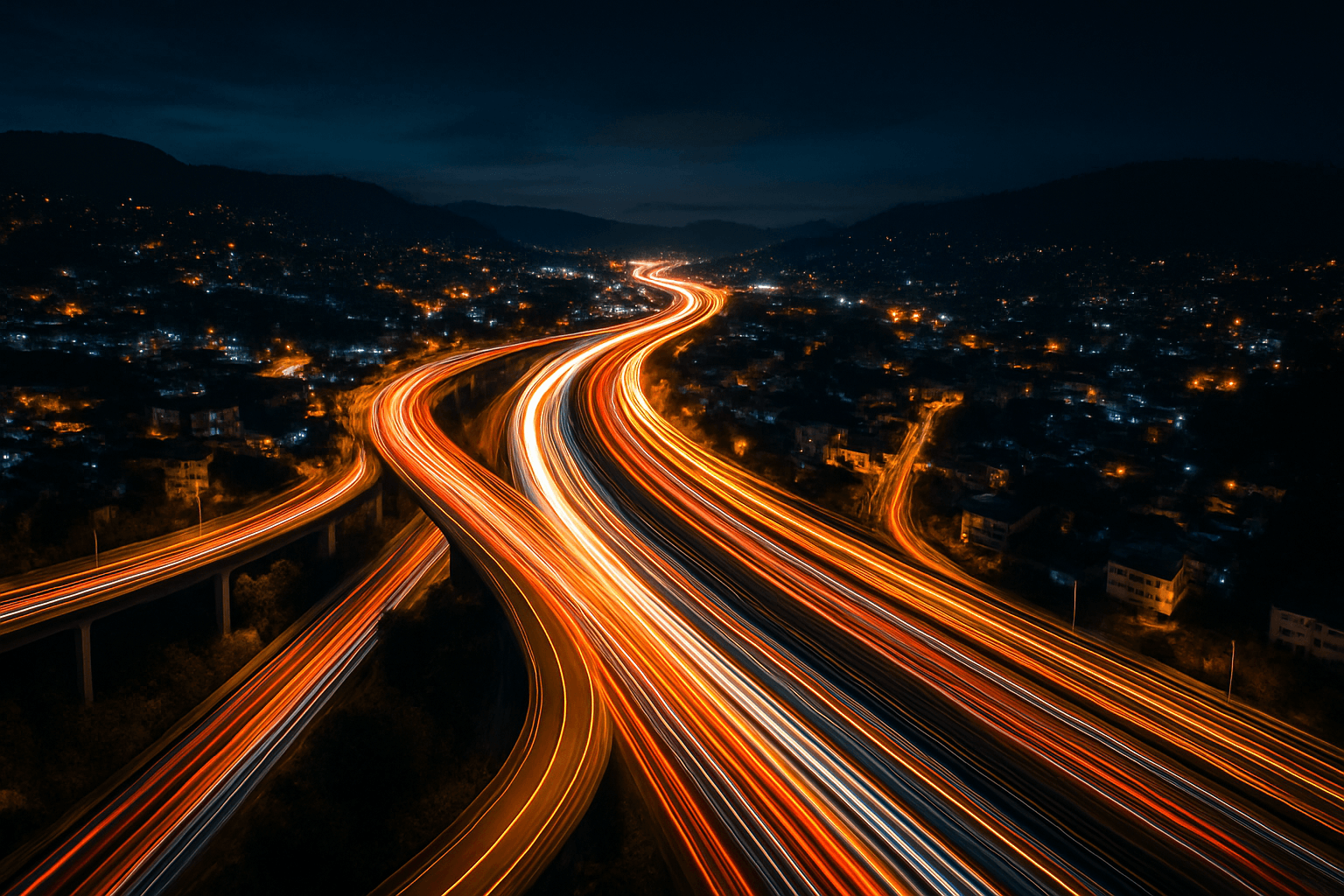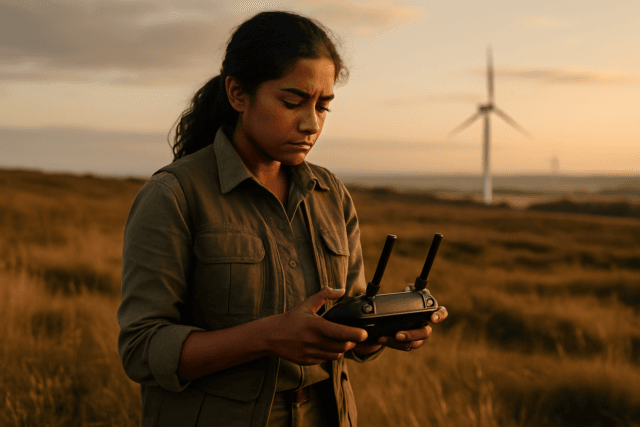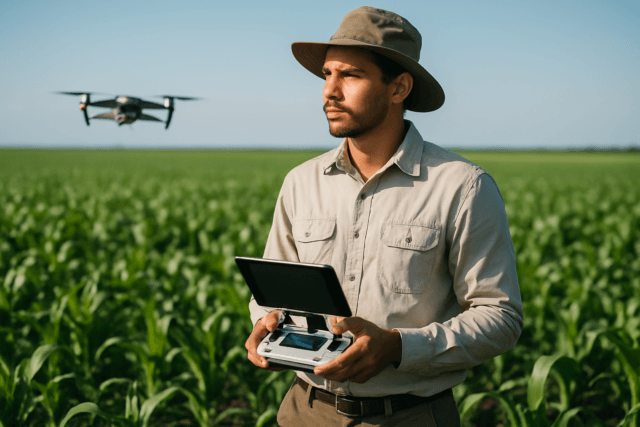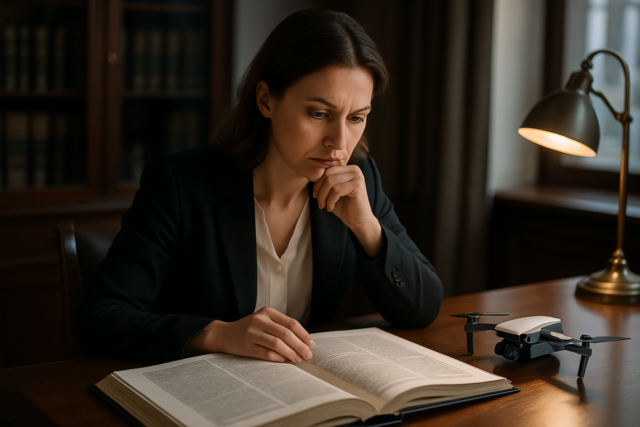Long exposure photography, traditionally the domain of sturdy tripods and terrestrial landscapes, has taken to the skies with the advent of advanced drone technology. By combining the unique aerial perspective of drones with the artistic technique of long exposure, photographers can now capture breathtaking images that were once impossible. This article explores the fascinating world of drone long exposure photography, covering everything from essential equipment and camera settings to creative techniques and legal considerations.
Why Try Long Exposure with a Drone?
- Unique Perspective: Drones offer a vantage point unlike any other, allowing you to capture landscapes, cityscapes, and natural phenomena from a fresh, exciting angle.
- Creative Effects: Long exposure techniques create motion blur, transforming moving elements like water, clouds, and traffic into ethereal streaks and patterns.
- Light Trails: Capture mesmerizing light trails from cars, boats, and other moving light sources, adding a dynamic element to your aerial compositions.
- Smooth Water & Clouds: Achieve a silky-smooth effect in bodies of water and soften the movement of clouds, creating a dreamlike quality in your images.
- Ghost Town Effect: With extremely slow shutter speeds, you can make moving people disappear from a scene, which can be useful on certain occasions.
Essential Gear for Drone Long Exposure Photography
- A Stable Drone: Crucial for capturing sharp long exposures. Look for drones with advanced stabilization systems that can withstand wind and other environmental factors.
- Neutral Density (ND) Filters: These filters reduce the amount of light entering the camera lens, allowing you to use longer shutter speeds in bright conditions without overexposing the image.
- Microfiber Cloth and Lens Cleaner: Keep your lens and filters clean for optimal image quality.
- Memory Cards: Essential for capturing a lot of images.
- Spare Batteries: Cold conditions and prolonged flights can drain power quickly.
Recommended Drones for Long Exposure Photography
- DJI Mavic 3 Pro/Classic: Equipped with a large 4/3-type CMOS sensor, the Mavic 3 series delivers exceptional image quality, dynamic range, and low-light performance.
- DJI Air 3: Offers a great balance of portability, performance, and image quality.
- DJI Air 2S: A solid option with a 1-inch sensor, providing excellent clarity and detail.
- DJI Mavic 2 Pro: Still a capable drone with a 1-inch sensor and variable aperture.
Understanding ND Filters
ND filters are like “sunglasses” for your camera, controlling the amount of light entering the lens. They are essential for long exposure photography in bright conditions.
- Why Use Them? To prevent overexposure and achieve longer shutter speeds.
- Filter Strengths: ND filters come in various strengths, such as ND4, ND8, ND16, ND32, ND64, ND1000 and ND2000, each reducing light by a specific fraction.
- ND8 (3 stops): Use this filter during slightly cloudy conditions or during sunrise/sunset when the sunlight is moderate.
- ND16 (4 stops): Suitable for bright days with lots of sunlight.
- ND32 (5 stops): Ideal for very sunny days or bright environments.
- ND64 (6 stops): For extremely bright conditions, like at the beach or snowy environments with intense sun.
- ND1000/ND2000: These strong filters allow for long exposure photography in the middle of the day.
Camera Settings for Drone Long Exposure
Mastering camera settings is crucial for achieving stunning long exposure shots with your drone.
Key Settings to Adjust
- Manual Mode: Essential for controlling shutter speed, aperture, and ISO.
- Shutter Speed: Determines the length of time the camera’s sensor is exposed to light. Slow shutter speeds (e.g., 1-8 seconds) create motion blur.
- Aperture: Controls the amount of light entering the lens and affects the depth of field. The Mavic 3 is the only current DJI model with a variable aperture.
- ISO: Measures the camera’s sensitivity to light. Keep it as low as possible (ISO 100) to minimize noise.
- White Balance: Adjust for accurate color representation.
- File Format: Shoot in RAW format to preserve maximum image detail and color information for post-processing.
- Focus: Set manual focus to infinity; autofocus may struggle in low light.
Optimizing Settings for Different Conditions
- Bright Sunlight: Use a high-strength ND filter (ND64 or higher), low ISO (100), and a small aperture (if adjustable) to prevent overexposure.
- Overcast Days: Use a weaker ND filter (ND8 or ND16), low ISO (100), and adjust the aperture and shutter speed to achieve the desired exposure.
- Low Light: Increase ISO (while minimizing noise), use a wider aperture (if adjustable), and experiment with longer shutter speeds.
Composition Techniques for Aerial Long Exposure
While technical settings are important, composition plays a vital role in creating compelling aerial long exposure photographs.
Composition Tips
- Rule of Thirds: Divide your frame into a 3×3 grid and position key elements along the lines or at their intersections.
- Leading Lines: Use natural or man-made lines to guide the viewer’s eye through the image and create depth.
- Symmetry and Patterns: Capture striking symmetrical compositions and mesmerizing patterns from a bird’s-eye view.
- Framing: Use foreground elements to frame your subject and add context to the scene.
- Color Contrast: Utilize color contrast to create dramatic compositions.
- Striking Shapes: Look for interesting shapes that reveal themselves from an aerial perspective.
Considerations for Aerial Composition
- Lighting: Pay attention to lighting conditions and shoot during the golden hour (just after sunrise or before sunset) for warm colors and soft illumination.
- Height and Angle: Experiment with different heights and angles to find the most compelling perspective.
- Balance: Strive for balance in your composition, ensuring that the elements in your frame complement each other.
Step-by-Step Guide to Drone Long Exposure Photography
- Plan Your Shot: Scout your location, consider the lighting conditions, and visualize the final image.
- Check Weather Conditions: Ensure minimal wind for stable drone flight.
- Attach ND Filter: Select the appropriate ND filter based on the ambient light.
- Set Camera to Manual Mode: Adjust shutter speed, aperture, ISO, and white balance.
- Compose Your Shot: Use the rule of thirds, leading lines, and other compositional techniques.
- Focus: Set manual focus to infinity.
- Take Test Shots: Review the images and adjust settings as needed.
- Capture Long Exposure: Take multiple shots to increase your chances of getting a sharp image.
- Review and Edit: Process your images in post-processing software to enhance colors, reduce noise, and fine-tune the exposure.
Post-Processing Tips for Drone Long Exposure Images
Post-processing is essential for bringing out the best in your drone long exposure photographs.
- Software: Adobe Lightroom, Photoshop, or other image editing software.
- Basic Adjustments: Adjust exposure, contrast, highlights, and shadows.
- Color Correction: Fine-tune colors and white balance.
- Noise Reduction: Reduce noise, especially in low-light images.
- Sharpening: Sharpen the image to enhance details.
- Image Stacking: If you don’t have an ND filter for your drone you can kind of simulate the effect. Take multiple images and use Photoshop to simulate an ND filter using all of these images.
Creative Techniques for Drone Long Exposure
- Light Trails: Capture light trails from moving vehicles in urban environments.
- Waterfalls: Create silky-smooth water effects in waterfalls and rivers.
- Coastal Scenes: Capture the movement of waves and create a dreamy, ethereal atmosphere.
- Clouds: Soften the movement of clouds and add a sense of dynamism to your landscapes.
- Hyperlapses: Combine long exposure with hyperlapse techniques for stunning time-lapse videos with motion blur.
Legal and Safety Considerations
- Drone Regulations: Familiarize yourself with local drone regulations, including airspace restrictions, no-fly zones, and licensing requirements.
- Visual Line of Sight: Maintain a direct visual line of sight to the drone at all times.
- Maximum Altitude: Do not fly higher than 120 meters (400 feet) in the UK.
- No-Fly Zones: Stay well away from airports, airfields, and other restricted areas.
- Privacy: Respect people’s privacy and avoid flying over private property without permission.
UK Specific Regulations
- Flyer ID and Operator ID: Anyone flying anything but the smallest of drones must have a Flyer ID. Everyone responsible for maintaining a drone must have an Operator ID, both obtainable from the CAA.
- Open Category: Drones and their flyers able to fly in this category do not need to obtain flight approval from the CAA for each flight.
Overcoming Challenges in Drone Long Exposure
- Drone Stability: Drones are not as stable as tripods, so wind and other factors can cause blur. Fly in calm conditions, use a stable drone, and take multiple shots.
- Battery Life: Long exposure flights can drain battery quickly. Use fully charged batteries and monitor battery levels closely.
- Image Noise: Low-light conditions and long exposures can introduce noise. Keep ISO low and use noise reduction in post-processing.
- Overexposure: Bright conditions can lead to overexposure. Use ND filters to reduce the amount of light entering the lens.
Is Drone Long Exposure Right for You?
Drone long exposure photography combines technical skill with artistic vision. By understanding the equipment, mastering camera settings, and following safety guidelines, you can capture stunning aerial images that showcase the world in a unique and captivating way.





